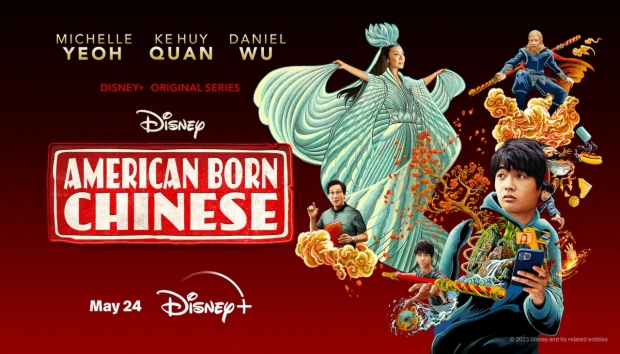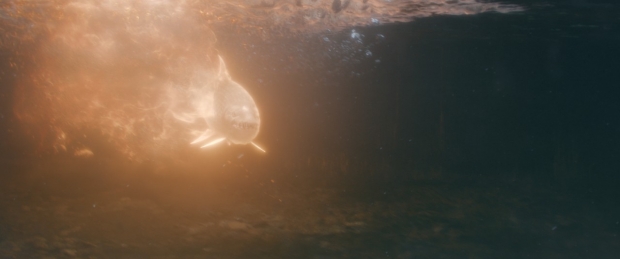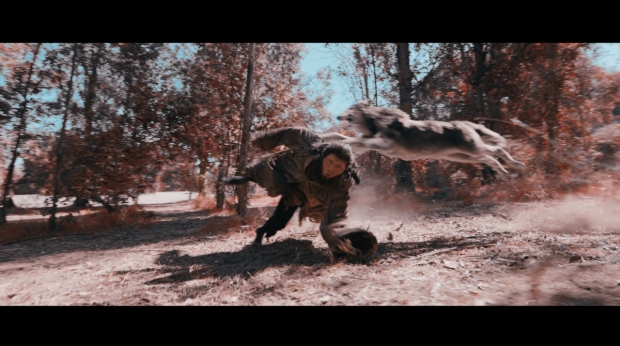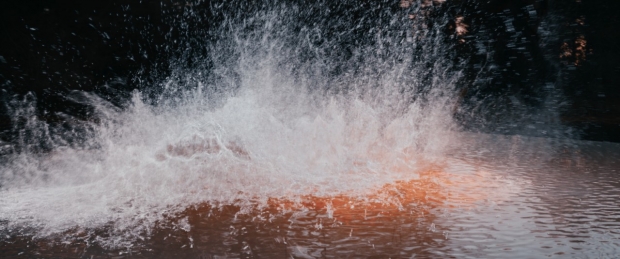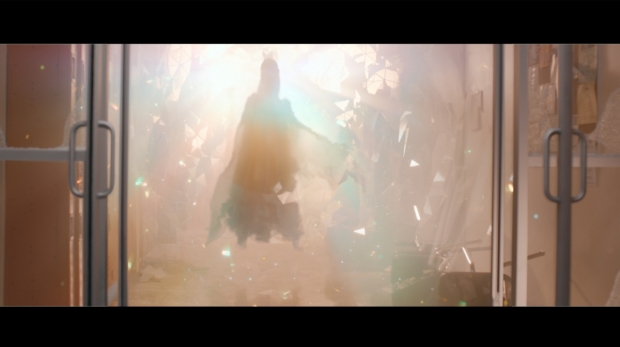The VFX supervisor, born in China before coming to the U.S. at age 9, shares her work overseeing 1100 visual effects shots on the Disney+ series that included the trickster God Monkey King’s transformation from falcon to tiger to fish, various gravity-defying flying characters, digital doubles, and an ambitious waterfall setting for a dangerous cliff jump.
What do you get when you combine a high school student coming of age in the present day with ancient mythology? Something that resembles American Born Chinese, which began life as a graphic novel by Gene Luen Yang and has since been adapted into an eight-episode Disney+ series. The story was inspired by Yang’s adolescent years and centers around a Grade 10 student chaperoning an exchange student because they share the same Asian heritage, who become entangled in an epic battle between deities. Overseeing the action comedy is creator Kelvin Yu along with executive producers Destin Daniel Cretton, Asher Goldstein, Jake Kasdan, Melvin Mar and Erin O’Malley. The series stars a who’s who of Asian cinema, in particular Yeo Yann Yann, Chin Han, Ke Huy Quan, Daniel Wu, James Hong, and Michelle Yeoh as well as newcomers Ben Wang and Jimmy Liu.
Getting involved with the project was a thrill for Kaitlyn Yang (Raised by Wolves) who supervised 1100 visual effects, created over a period of six months, by Alpha Studios, DNEG, ReDefine, DigitalFilm Tree, Plucky, Pixelloid Studios, and Human Engine. “This one will always have a special place in my heart mainly because this is the first time ever where I saw so many aspects of myself on the screen,” states Yang. “The Mandarin language was spoken constantly and the only people I speak Mandarin with are with my family. To hear those dialogues onset and act as a translator for others it was quite special.”
Check out the VFX highlight reel for Episode 9, submitted for Primetime Emmy Award consideration:
Interestingly, American Born Chinese was shot with Ke Huy Quan and Michelle Yeoh before Everything Everywhere All at Once was released and subsequently went onto Oscar glory. “Ke Huy Quan’s character looks so different that for half a day of filming I didn’t recognize him!”
Yu and Cretton listened to new ideas but there were certain key words that had to be followed. “But like any other good aspect of storytelling, it’s a feeling that you’re trying to capture,” notes Yang. “The person who is on top of a cliff, what is his moment there? And that would dictate the waterfall in the background that our team at DNEG put together. How fast was the waterfall moving? Could that contribute to the intense dialogue that the dad and son are having? For Lucy Liu’s episode, it was fantastic working with her. I always said that she was my spirit animal. Lucy wanted to keep it fun and light for one aspect of the episode which is centred around a birthday celebration. But behind that scene you have good and evil battling literally in the next room.”
The trickster god known as the Monkey King is familiar figure in Chinese mythology. “Have we ever seen the Monkey King in the present day or in a suburb or having an argument with his son?” notes Yang. “You see so many nods to Asian traditions throughout the series.” The series starts with an action-packed chase scene with the Monkey King displaying some of his possible 72 transformations. “For the Monkey King, one of his known attributes is he is able to transform into whatever it is that fits in the scenario that helps him to get where he needs to go next. You have a falcon changing into a tiger changing into a fish! How do we do that? That is just page two. And figuring out what resources we need to have right away and how we can break things apart so we can have all our creative vendors do what they do best working within the schedule that we had and also anticipating any COVID-19 delays, whatever those might be. Ultimately, setting a workflow that was comfortable.”
Budgeting and executing the visual effects was a team effort. “I must give a big shoutout to my post supervisors and producers Emanuel Fidalgo and Matthew Bolton because they had solutions ready to go including ones that we were keeping in our back pocket just in case,” remarks Yang. “For Episode 101, the intense chase scene, we were able to work with DigitalFilm Tree and their previs alongside our stunt coordinator Peng Zheng, who with his team was able to put together stuntvis shot on iPhones to give us a sense of the camera movement and how one scene stitched with another. That helped so many departments to visualize what we needed to do and where the handoff was. There was one episode where we had canvases come to life. Plucky, here in Los Angeles, did a fantastic job separating oil paintings and giving us this stylized and artistic animation.”
Elements such as spells had to be utilized judicially. “There have to be enough magical moments that you want to see more but never so much that it takes you out of the story.”
Most of the effects were temped by Pixelloid. “Not necessarily to the degree of the final look that we ultimately settled on, but giving us the beats, laying the markers of what was needed and providing an iteration as our stepping stone to keep improving upon,” states Yang. “The most iterations were probably for the Heaven episode that was mainly shot on bluescreen. To fine tune the lighting and matte painting, we definitely used all the time on the clock for that one. In Episode 108, we have this intense battle in the sky that we had to somehow make believable enough with our audience thinking they’re just coming to a high school soccer game not knowing that this was the soccer game that decided the fate between so many moving parts.”
Despite cast members like Michelle Yeoh performing their own stunts, digital doubles still had to be created. According to Yang, “We had people flying into the sky, people walking on water, cliff jumping, and sky fighting. There are so many incidences where even before wire removal, background replacements, watching the dailies was so cool. We were able to get some CG doubles and used this company called Human Engine. They were able to come onset and setup a portable scan station for us. But for most of it we had an incredible stunt team that showed off the martial arts.”
“I hope that people will love the chase scene in Episode 101 as much as we loved putting it together,” Yang shares. “That sequence in particular took the most days, shot count, and budget. That was not only a fun sequence but set the tone for the rest of season. It was one of the first sequences that we shot. The most challenging aspect was letting our vendors into this world that a lot of us have grown up with. How can we capitalize on the humor but also take into consideration the seriousness of the family drama? We’re sharing our cultural knowledge in this global community that we call the visual effects industry and sharing the visuals and tones of the Monkey King with our vendors in Canada, Los Angeles, and India, coming up with a cohesive visual language that everyone can still put their own spin on, get the best iteration, have enough time to not feel so rushed and be able to take a moment to savour all of the work that went into American Born Chinese.”
